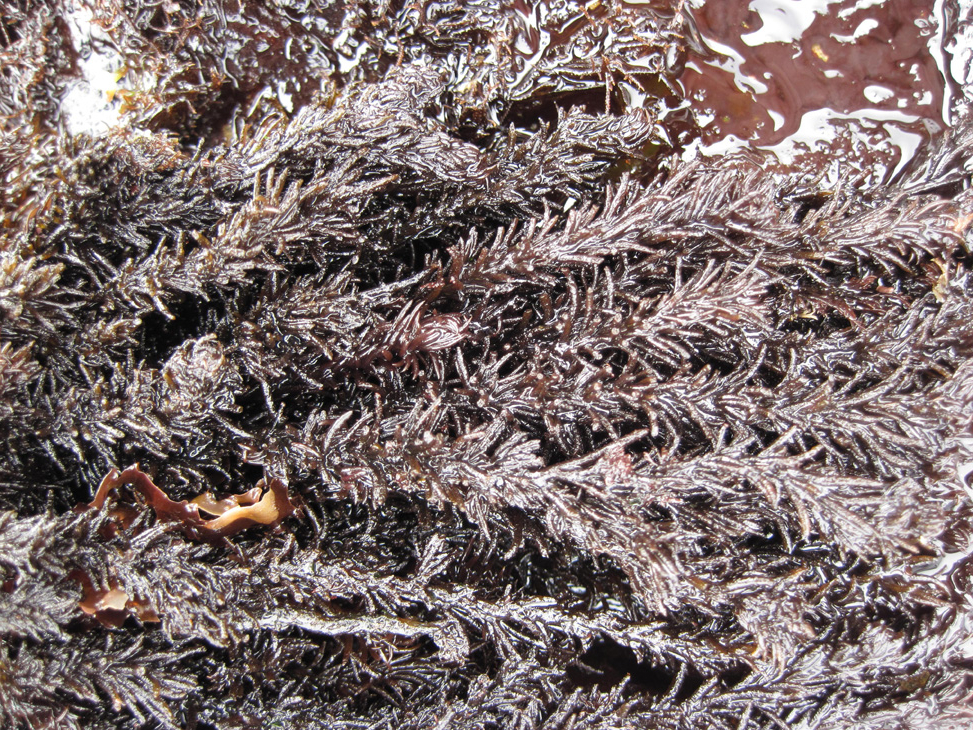Neorhodomela | MARINe
Neorhodomela (Black Pine)
Neorhodomela larix (Turner 1819)
Last updated March, 2012
Kingdom Plantae, phylum Rhodophyta, class Florideophyceae, order Ceramiales
Previous Species | Google image results | Next Species
Description
This red alga forms brownish-black turfs with thalli that fall mostly between 10-20 (maximum 30) cm. Thalli consist of several to many erect axes which whorl around a common base, like a bottle brush. The short, wiry branches and branchletts are blunt and mostly uniform in length (Abbott and Hollenberg 1976).
Habitat and Geographic Range
An abundant species in wave restricted areas on rocks, primarily on sand-swept reefs. Neorhodomela larix ranges from the North Alaska to Baja California, Mexico (Lamb and Hanby 2005). Rare south of Government Pt. (Santa Barbara Co.).
Synonyms
Rhodomela larix
Similar species
Odonthalia floccosa have loose bushy tufts of branches with sharp tips compared to the tighter tufts with blunt tips of N. larix. O.washingotniensis has branches distinctly and markedly flattened resembling a flattened "primitive" Christmas tree. Neorhodomela oregona is quite similar in appearance to N. larix, but it is not quite as coarse and stiff, it has more orders of branching, and its branchlets are not so obviously bunched (O’Clair and Lindstrom 2000).
Natural History
N. larix is a tough perennial alga with annual thalli that either get beaten back or torn loose by winter storms, leaving behind small tufts or encrusting holdfasts (Abbott and Hollenberg 1976, D’Antonio 1985). When a thallus is broken off, rather than pulled up from the base, the remaining attached portion may persist throughout the following spring and summer (D’Antonio 1982). It is thought that individual axes may live 1 to 3 years while the boundaries of N. larix clumps may be maintained for >25 years (D’Antonio 1985). A study of turf-forming algal communities in the low intertidal region of the Oregon coast described Neorhodomela larix as one of the most abundant, wave-sheltered red algal species (Menge et al. 1993). Neorhodomela larix has an isomorphic life cycle; gametophytes look identical to tetrasporophytes (O’Clair and Lindstrom 2000). Spore release can occur at all times during the year except during winter, but Menge et al. (1993) documented low recruitment, suggesting that the high abundance of this alga depends on vegetative growth and long persistence. N. larix is a host for at least 17 species of sessile plants and animals on the central coast in Oregon (D’Antonio 1985). D’ Antonio (1985) suggests that epiphytes decrease the growth rate of N. larix, increase the probability of axis breakage, and decrease reproductive output while providing food for littorine snails and gammarid amphipods that live in the beds of this alga.


